AGFC and UAPB tune in to DeGray Lake hybrid bass
ON 03-14-2018
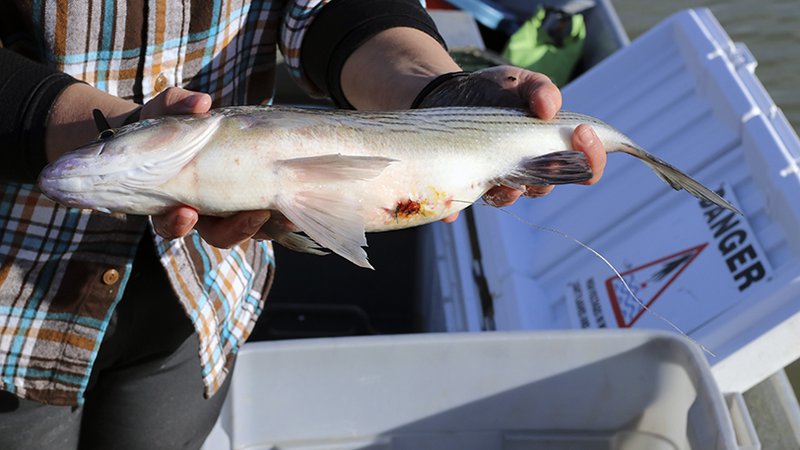
March 14, 2018
Randy Zellers
Assistant Chief of Communications
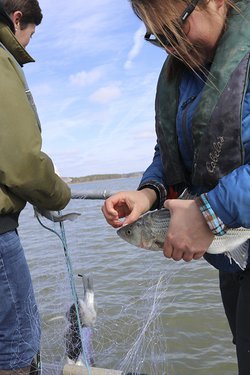
ARKADELPHIA – Hybrid striped bass are hard-pulling sport fish that have a reputation for being cooperative when bass and crappie become finicky. These man-made crosses of a white bass and their striped bass cousins also cause a bit of controversy between anglers who fish for them and those who prefer other species.
Brett Hobbs, fisheries management supervisor at the Arkansas Game and Fish Commission’s Hot Springs Regional Office, says that although DeGray Lake is one of the best hybrid fisheries in the state, perceptions of anglers have helped spur biologists to look a little deeper into the habits of hybrid striped bass and largemouth at DeGray – two of the most popular fish species in the lake.
“Creel studies conducted from 2014 to 2017 indicate that hybrids are typically the second- or third-most fished for species at DeGray,” Hobbs said. “But we also hear concerns from some anglers that they may be hurting the fishery and we want to thoroughly evaluate any direct or indirect impacts the hybrids may have on other species.”
Hybrid striped bass do not reproduce naturally in DeGray, so the hybrid population can be manipulated by adjusting stocking rates. Each lake has a management plan that describes stocking rates, and biologists are developing adjustments to the stocking rates of stripers and hybrids in those plans.
The most common complaint is the thought that hybrids are eating shad that could be feeding largemouth bass. Hobbs explains that shad in the open water where hybrids usually roam are not always available to other fish species that spend most of their time in shallower habitat.
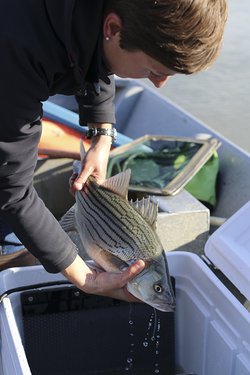
“Except when they are schooling and chasing baitfish, largemouth bass typically inhabit water less than 25 feet deep,” Hobbs said. “Hybrids have very seasonal movement patterns, which includes a migration from one end of DeGray Lake to the other. We want to investigate these movements and determine the extent of habitat overlap between largemouth bass and hybrid striped bass.”
Sean Lusk, fisheries management biologist at the Arkansas Game and Fish Commission’s Hot Springs Regional Office, says studies have been done on striped bass populations in Tennessee and Alabama that show no significant increase in the total poundage of individual predator species such as largemouth bass once striped bass were removed. However, no studies have been focused on measuring such impacts of hybrid striped bass.
“We stock hybrids in DeGray, not striped bass, so we cannot rely on research focused on striped bass to answer questions related to the effects of forage and habitat overlap between hybrid striped bass and other sportfish,” Lusk said. “Our primary responsibility is to conserve the resource, once we’ve done that we are tasked with creating additional sport fishing opportunities when possible, and hybrids offer that.”
To help manage this balancing act of benefitting the resource and providing fishing opportunities, Lusk and Hobbs have enlisted the help of the University of Arkansas at Pine Bluff.
Jeremiah Salinger, a doctoral student, is leading a team for Steve Lochman’s fish ecology and management laboratory to dig deeper into the hybrid bass’s habits on DeGray. A portion of the UAPB study will assess what hybrids and largemouth bass are eating throughout the year, and if they truly are competing with each other.
Researchers have collected and radio-tagged 50 largemouth bass and 50 hybrid striped bass during the last two months to begin the first phase of the study.
“We gill net the fish and implant a radio transmitter in them, Salinger said. “We can then track them through the year to learn where they are and how it relates to where we’re finding largemouth bass at the same time.”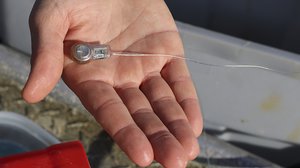
In tracking studies that rely on recapturing tagged fish, scientists can use a small chip inserted into the fish with a needle to identify it with a unique number, but with radio tracking, the process is a bit more involved. Researchers must surgically implant radio transmitters into the fish that send a unique signal to a receiver so that it may be identified later. Once the fish is released, scientists can determine where each is located without ever capturing it again.
“We leave the catching to the anglers,” Salinger said. “We track the fish with a radio receiver programmed to listen for each individual tag.”
Salinger will follow the fish for the rest of the year, and mark where they find them. Any instances where the two species are in the same area or habitat type will be noted. From these data, researchers can evaluate how much, if any, conflict exists over the amount of space in the habitat.
“In the second phase of the study that will begin next year, we’ll actually go out and do stomach content analysis on hybrids in these areas,” Salinger said. “We’ll then be able to give our findings to the biologists, so they can determine any impacts the hybrids may be having and the next course of action.”
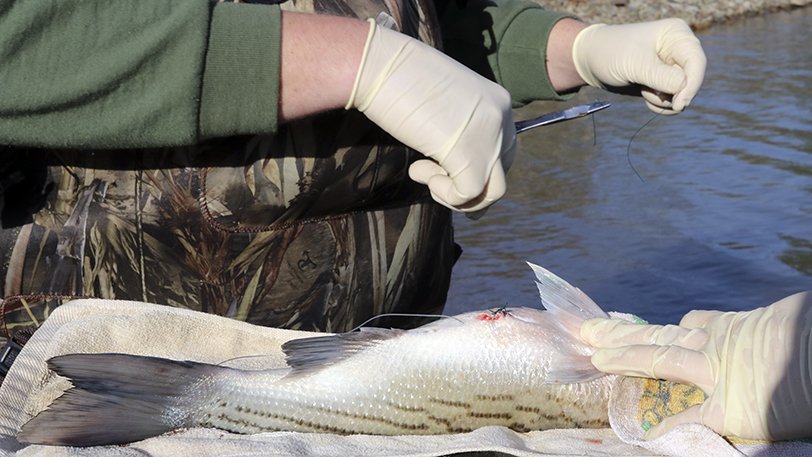
Recent News
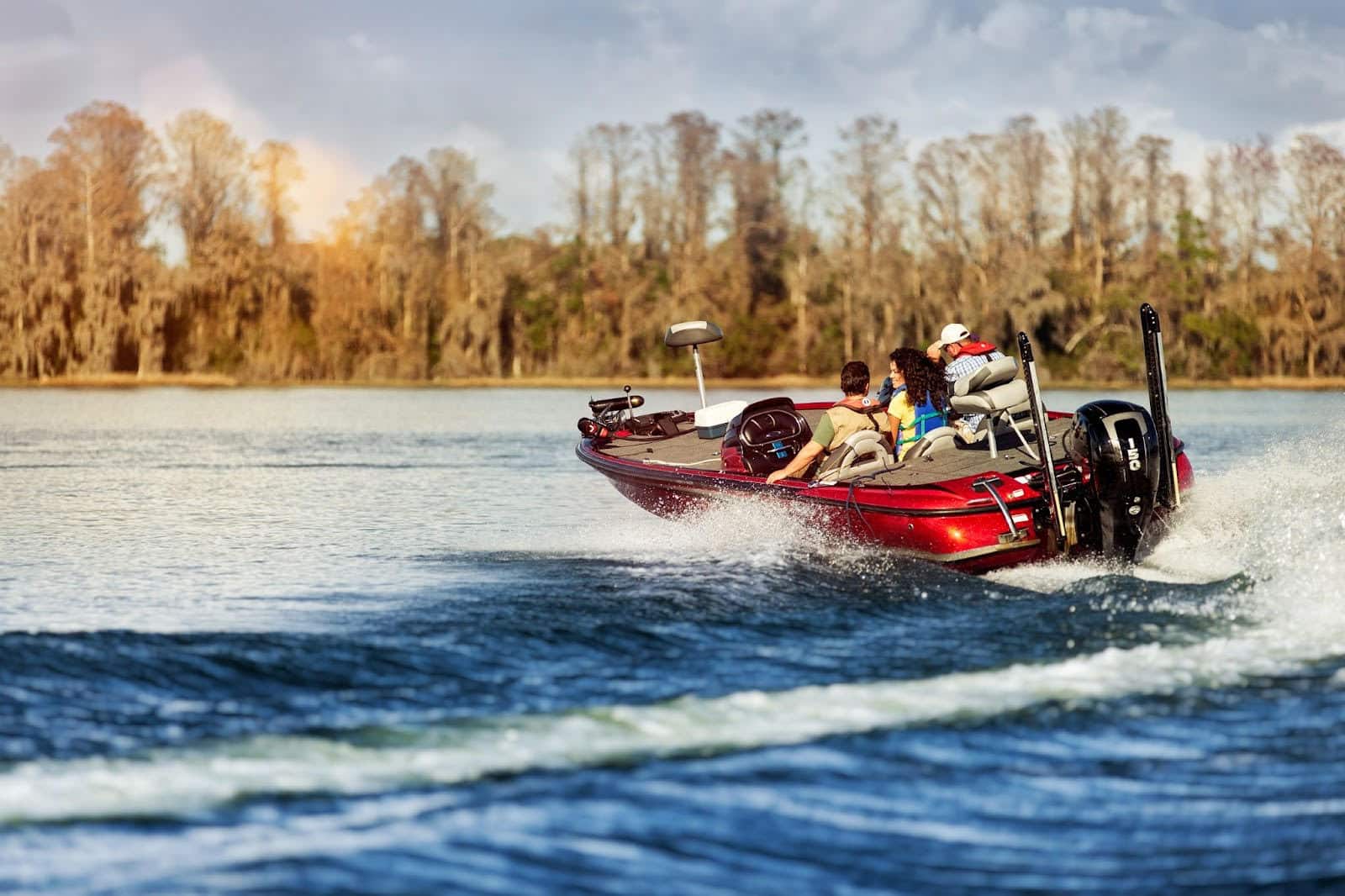
Watch your wake
Jul. 2, 2025
Subscribe to Our Weekly Newsletter E-mails
Don’t miss another issue. Sign up now to receive the AGFC Wildlife Weekly Newsletter in your mailbox every Wednesday afternoon (Waterfowl Reports are published weekly during waterfowl season and periodically outside the season). Fishing Reports arrive on Thursdays. Fill in the following fields and hit submit. Thanks, and welcome!

